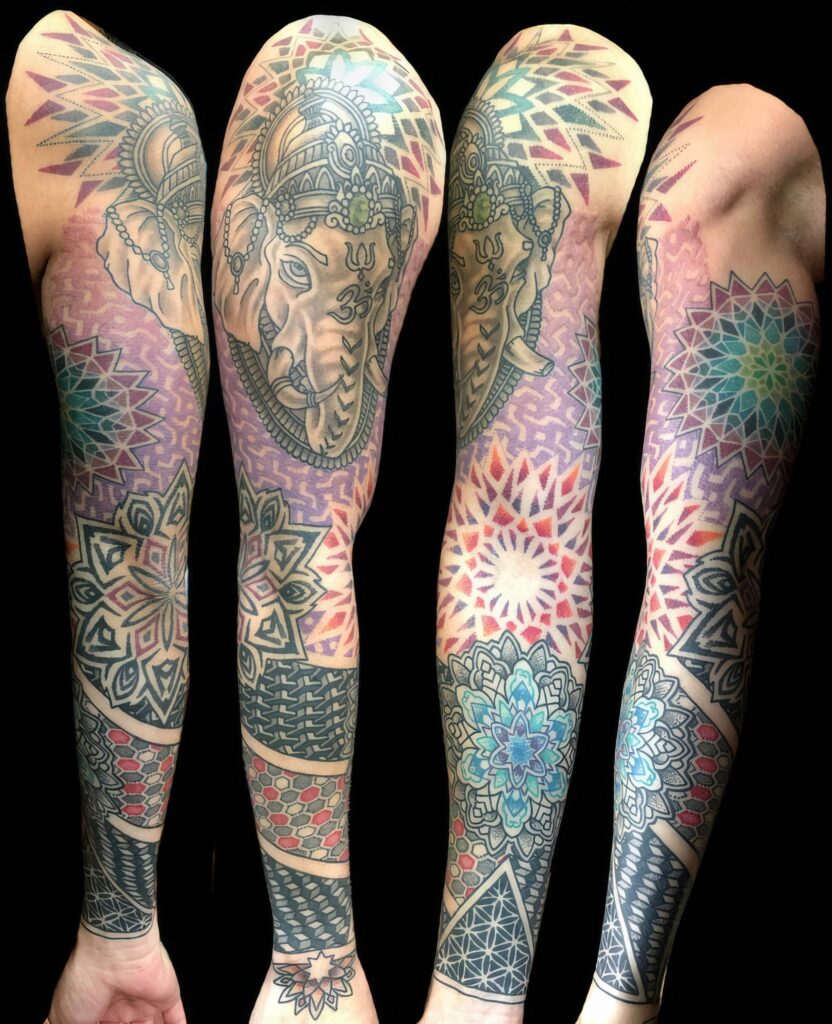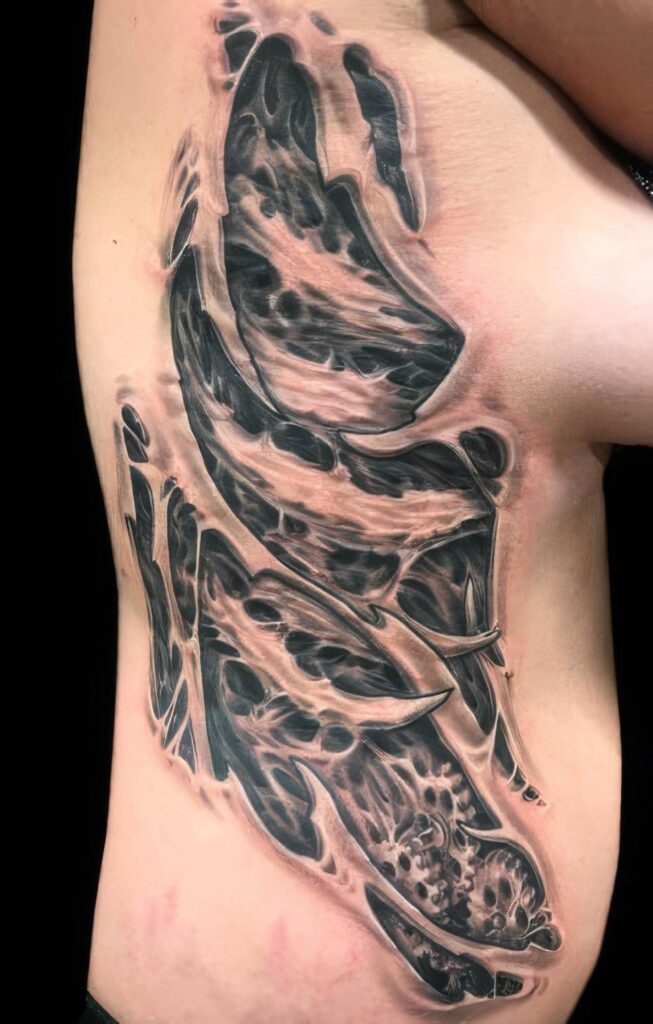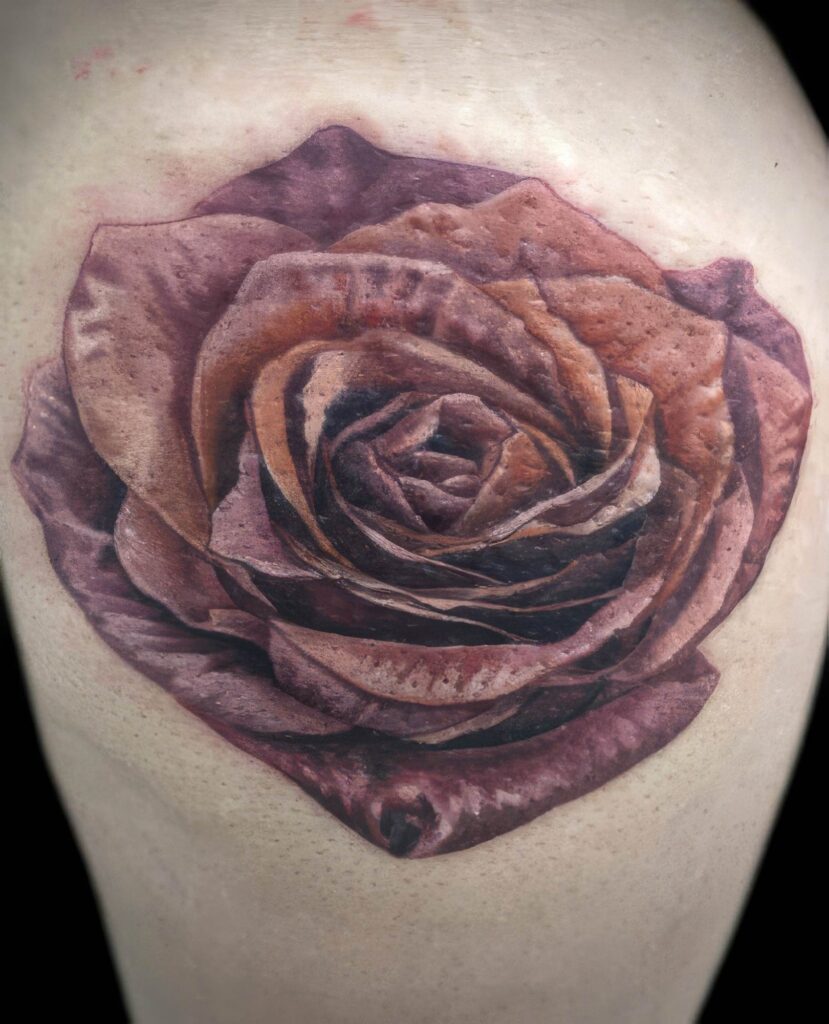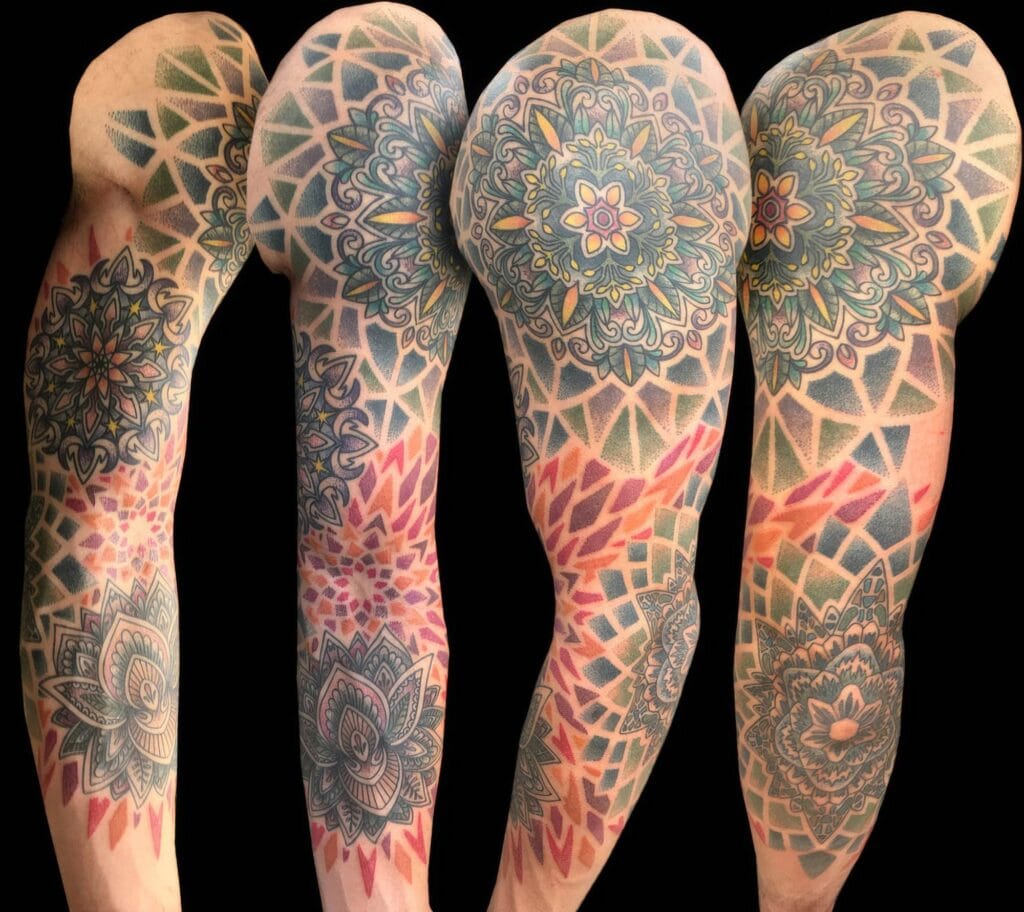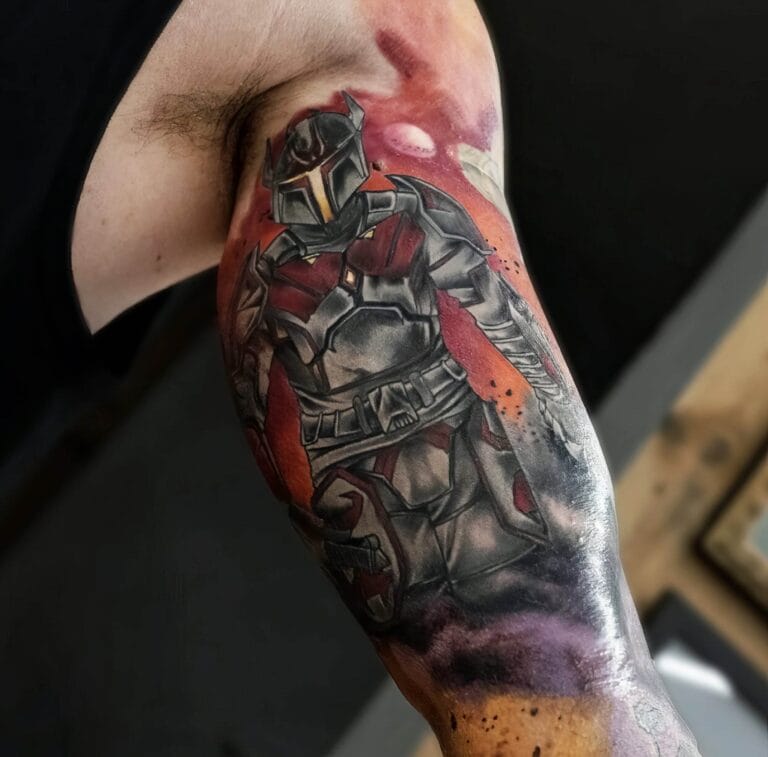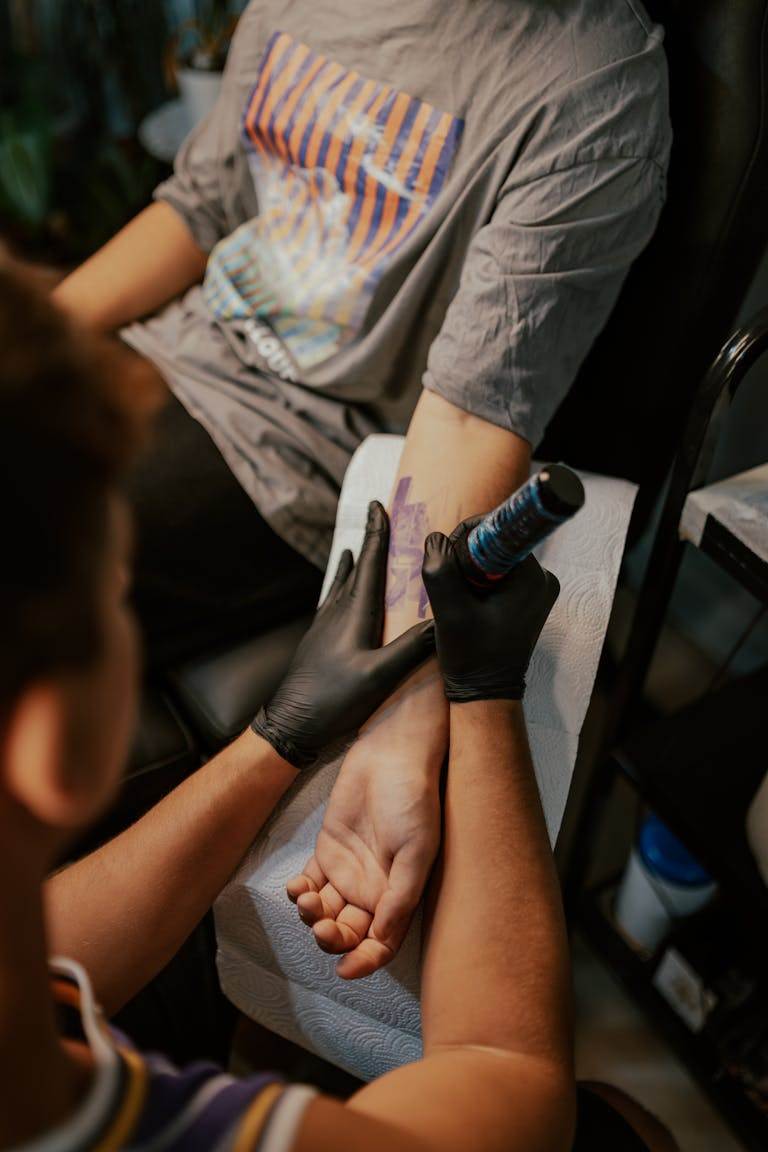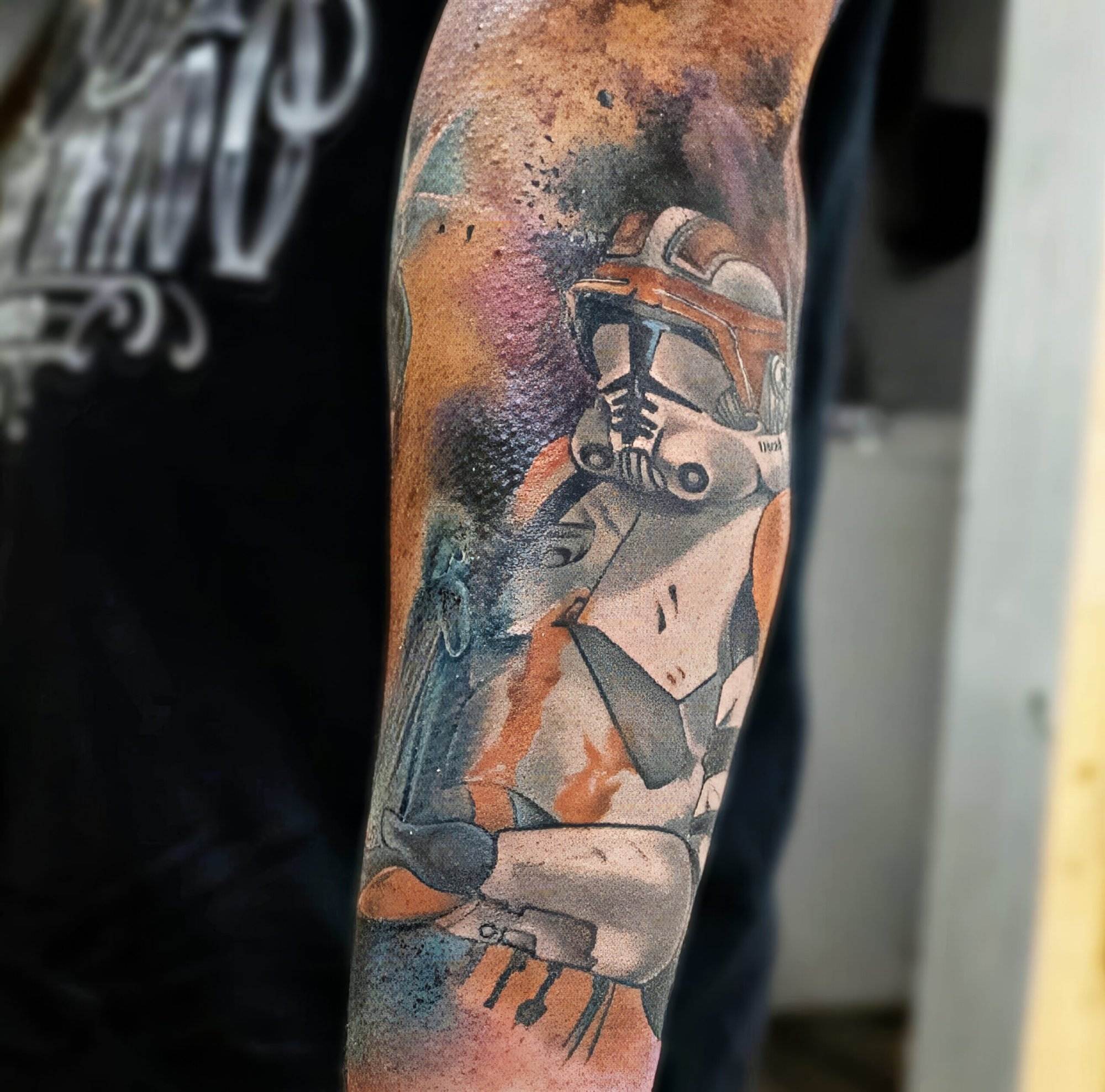
Introduction to Tattoo Aftercare
Importance of Proper Aftercare
Tattoo aftercare is crucial in ensuring that your new ink heals correctly and maintains its vibrancy. Proper aftercare not only minimizes the risk of infections but also prevents fading and blurring, allowing the artwork to shine as intended. Neglecting aftercare can lead to complications such as scabbing or uneven healing, ultimately affecting the visual quality of the tattoo.
Common Aftercare Mistakes to Avoid
Avoiding common mistakes can significantly enhance your tattoo’s healing process. Here are a few pitfalls to steer clear of:
- Overwashing: Cleansing your tattoo too often can strip away necessary oils and moisture.
- Scratching or Picking: This can cause scars or disruptions in the ink.
- Skipping Moisturizer: Not keeping the tattoo hydrated can lead to dry skin and poor healing.
By understanding these aspects, a tattoo enthusiast can ensure their body art remains as vibrant and stunning as the day it was applied.
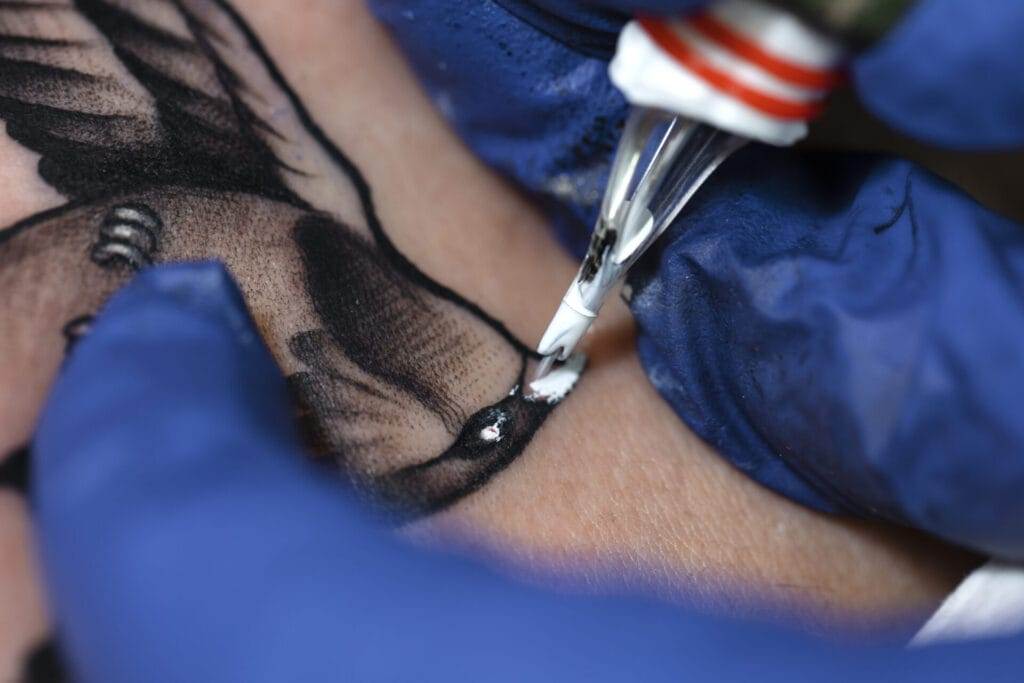
Initial Aftercare Steps
Cleaning Your Tattoo
Once you’ve left the tattoo studio, the first step in your aftercare routine is to clean your tattoo properly. Using lukewarm water and a mild, fragrance-free soap, gently cleanse the area with your fingertips. Avoid using abrasive materials like washcloths or loofahs. Rinse thoroughly, ensuring no soap residue remains. Remember, clean hands are essential; always wash your hands before touching your tattoo to prevent infection.
Properly Moisturizing Your Tattoo
After cleaning, it’s time to moisturize. Keeping your tattoo hydrated is vital for a smooth healing process. Apply a thin layer of a recommended tattoo aftercare ointment or fragrance-free moisturizer, ensuring you don’t overdo it. Here’s a quick checklist:
- Frequency: Moisturize at least 2-3 times a day.
- Amount: A pea-sized amount is generally sufficient.
- Avoid Products: Stay clear of petroleum-based products, as they can suffocate the skin.
By following these steps, you’ll contribute to the longevity and beauty of your tattoo.
Protecting Your Tattoo
Sun Protection for Vibrant Ink
Once your tattoo has healed, protecting it from sun exposure is crucial for maintaining its vibrancy. UV rays can significantly fade your tattoo over time. Use a broad-spectrum sunscreen with at least SPF 30 on the tattooed area whenever you’re outdoors. Reapply every two hours, especially if you’re sweating or swimming. Additionally, wearing a long-sleeved shirt can offer physical protection against the sun.
Clothing and Tattoo Care
Choosing the right clothing can further protect your tattoo from damage. Opt for loose-fitting garments that won’t irritate the skin as it heals. Here’s a quick guide:
- Cotton Fabrics: Breathable materials prevent excessive moisture accumulation.
- Avoid Tight Clothing: This can rub against your tattoo, leading to irritation.
- Layering: In cooler weather, use layers to avoid direct friction on your tattoo.
By prioritizing sun protection and being mindful about clothing choices, you can help your tattoo remain vibrant and beautiful for years to come.
Healing Process Timeline
Understanding the Tattoo Healing Stages
The healing process of a tattoo can be divided into several stages, each with distinct characteristics. Understanding these stages can help you monitor your tattoo’s healing effectively:
- Days 1-3: During this phase, the tattoo will look vibrant but may feel tender and swollen. It’s essential to keep it clean and moisturized.
- Days 4-7: This is when peeling begins, similar to a sunburn. It’s a normal part of healing; avoid picking at the skin.
- Weeks 2-4: By now, the tattoo starts to settle and appears less shiny. However, it’s still susceptible to UV damage.
Signs of a Healing Tattoo
Recognizing signs of proper healing can give peace of mind. Look for:
- Even Scabbing: Scabs should be small, even, and dry.
- Less Tenderness: Reduced sensitivity indicates your skin is healing.
- Vibrant Colors: The tattoo may appear slightly duller as it heals but remains clear.
Monitoring these stages and signs ensures that your tattoo heals beautifully and remains a cherished piece of art.
Long-Term Tattoo Maintenance
Touch-Ups and Color Enhancement
To keep your tattoo looking fresh and vibrant, periodic touch-ups may be necessary. Over time, certain colors might fade, and outlines can become less sharp. Scheduling a touch-up appointment every few years ensures your tattoo retains its initial beauty. Here are a few things to consider for color enhancement:
- Timing: Wait at least 4-6 weeks after the initial tattoo heals before scheduling a touch-up.
- Selection of Colors: Vibrant pigments may require more maintenance, so discuss color longevity with your artist.
Preventing Fading and Blurring
To avoid fading and blurring over time, incorporate these simple practices into your routine:
- Apply Sunscreen: As mentioned previously, protect your tattoo from UV rays.
- Stay Hydrated: Hydration helps maintain skin elasticity and vibrancy.
- Moisturize Regularly: Consistently moisturizing keeps the skin and ink looking fresh.
By investing in touch-ups and adopting preventive measures, your tattoo can continue to be a striking expression of art for years to come.

Skincare Products for Tattoos
Recommended Tattoo Aftercare Products
Choosing the right skincare products for your tattoo is essential for optimal healing and longevity. Some well-regarded tattoo aftercare options include:
- Fragrance-Free Moisturizers: Look for products that hydrate without irritation.
- Tattoo Ointments: Specialized ointments designed for tattoos can provide the right balance of moisture and protection.
- Healing Balms: These often contain natural ingredients that soothe and promote healing.
Ingredients to Avoid in Tattoo Products
While finding suitable products is important, it’s equally critical to avoid harmful ingredients that can impede healing or damage your tattoo. Be wary of:
- Alcohol: It can dry out the skin and irritate the tattoo.
- Fragrances: Artificial scents may cause sensitivity and allergic reactions.
- Petroleum Jelly: While it may provide some moisture, it can suffocate the skin and interfere with the healing process.
By selecting the right products and steering clear of harmful ingredients, you can help ensure your tattoo remains vibrant and well-maintained over time.
Professional Help and Consultation
Seeking Advice from Tattoo Artists
Engaging with your tattoo artist for aftercare advice is vital for maintaining the integrity of your new ink. Artists can provide tailored recommendations based on your specific tattoo design and skin type. Here are a few key points to discuss:
- Personal Aftercare Routine: Inquire about the best products that suit your tattoo.
- Healing Timeline: Understanding what to expect during the healing process can alleviate worries.
- Follow-Up Appointments: Ask if a follow-up check is necessary to assess healing.
Professional Tattoo Aftercare Services
Some studios offer professional aftercare services that can take your tattoo care to the next level. These may include:
- Specialized Treatments: Such as soothing balms or laser healing treatments for stubborn areas.
- Consultation on Touch-Ups: Scheduling periodic assessments with your artist can ensure your tattoo remains vibrant.
Consulting with professionals strengthens the bond between you and your tattoo, ensuring it stays as beautiful as the day it was created.
Lifestyle Changes for Vibrant Tattoos
Hydration and Diet for Healthy Skin
Maintaining vibrant tattoos goes beyond aftercare; it involves lifestyle choices, particularly hydration and diet. Drinking plenty of water keeps the skin plump and aids in the healing process. Aim for:
- 8-10 glasses of water daily to maintain hydration.
- Nutritious Foods: Incorporate fruits and vegetables rich in vitamins A, C, and E, which promote skin health and elasticity.
Impact of Smoking and Alcohol on Tattoos
Both smoking and excessive alcohol consumption can detrimentally affect the vibrancy of tattoos. Smoking reduces blood flow and slows healing, leading to poor skin condition. Similarly, alcohol can lead to dehydration, exacerbating fading and blurring. To preserve the beauty of your ink, consider:
- Limiting Alcohol Intake: Opt for moderate consumption to maintain skin health.
- Quitting Smoking: This will not only benefit your skin but improve overall well-being.
By adopting these lifestyle changes, you’ll create an environment conducive to vibrant and lasting tattoos.

